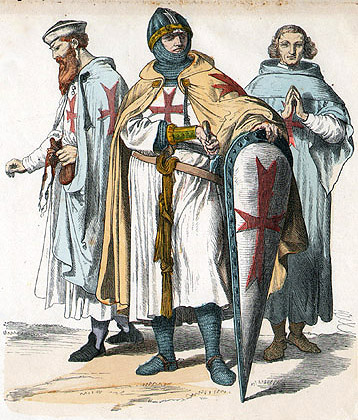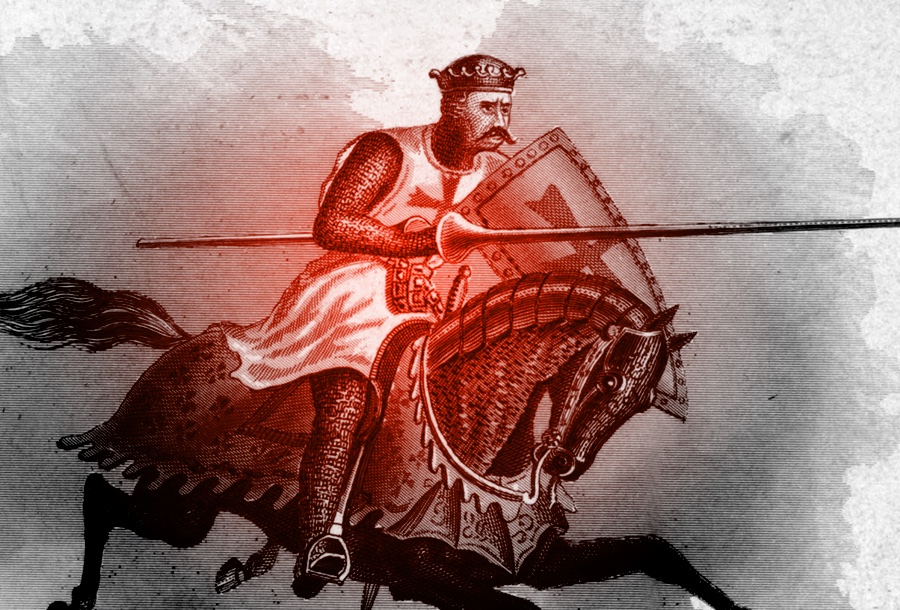An easy primer to one of the Crusade’s most famous orders
Subscribe to All About History now for amazing savings!

What was it?
The Poor Fellow-Soldiers of Christ and the Temple of Solomon (or Knights Templar) was an elite military order formed in France to protect Christian pilgrims travelling to Jerusalem and defend the Holy Land from Muslim armies. Templars upheld the ideals of a religious knighthood.
When were they formed?
Following the recapture of Jerusalem from Seljuk Muslims in 1099 by Roman Catholic Crusaders, weak Holy Land Christian states appealed to Europeans to bolster their populations. The massacre of hundreds of pilgrims at the Jordan River in Easter 1119 by Saracens, and the capture of Christian leaders in Nablus, necessitated better protection, hence the Templars’ formation in the same year.
Who were the Knights Templar?
Only existing knights (heavy cavalry) or sergeants (light cavalry) could become full warrior Templars. Jerusalem’s king, Baldwin II, and Garmond, the city’s Latin patriarch, approved the first Templars, nine knights, all blood or marriage relatives. Another relative, the Benedictine abbot Bernard of Clairvaux, championed the Templars, and by 1130 many new members were recruited during a tour of Europe by Hugh de Champagne, lord of Hugh de Payens, the founding grand master.
Protecting sacred secrets?
The Templars’ association with the Holy Grail, the cup used by Jesus at the Last Supper, traces back to Wolfram Von Eschenbach’s Parzifal. In this 13th-century epic romance, the Grail is housed in a temple kept by ‘templeise’, translated as Templars. Parzifal was influenced by an epic written by Chretian de Troyes, who was a relative of Grand Master Hugh de Payens.
The ultimate relic
Another persistent legend makes them custodians of the Shroud of Turin, the cloth apparently displaying an image of the crucified Jesus. One theory is the shroud was folded and framed to show only the head, and this may have prompted the suspicion that they venerated a ‘severed head.’
Shock tactics
Templars made up for their inferior numbers on the battlefield by acting as shock troops, charging into and scattering enemy lines so allied troops could capitalise on the confusion they caused. They would not retreat unless outnumbered by more than three-to-one, earning the respect of both sides in fights such as the Battle of Montgisard in 1177.
Beyond state control
A series of extraordinary measures over the 12th and 13th centuries gave the Templars autonomy from church control, freedom to cross borders as they liked, and even exemption from paying taxes. While this made them virtually a ‘state within a state’, the power afforded them also sowed the seeds of their downfall.
Charges of blasphemy
A major accusation against the Templars during their trials was that they worshipped a mummified head known as Baphomet. In the church of Templecombe in Somerset there is a panel painting of a severed head, which may represent John the Baptist, dating to when the Templars had a preceptory in the village.
Decline and fall
By the 14th century, the Templars were papal treasurers. Controversy over a loan to Philip IV of France hurt their standing with Pope Clement V. Philip’s spies infiltrated the order, heretical rumours abounded, and in 1307 the king had every Templar in France arrested, tried, and either executed or quietly moved into other orders.
Originally published in All About History 20
Subscribe to All About History now for amazing savings!

